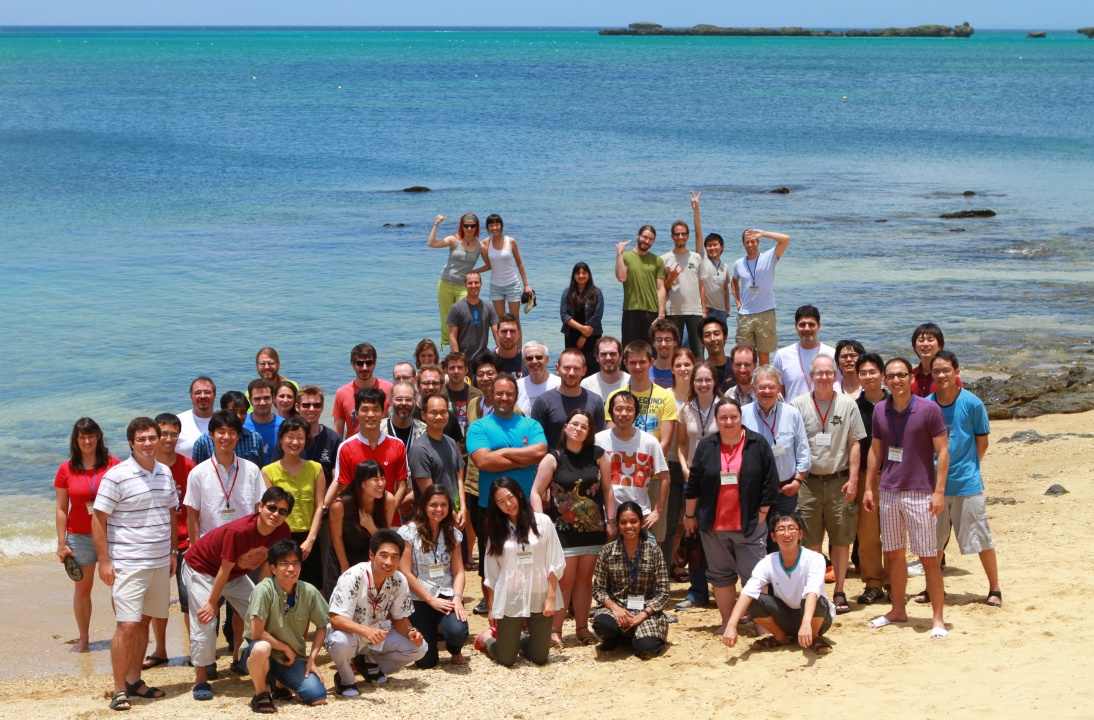OCNC2011
Okinawa Computational Neuroscience Course 2011
June 13 - June 30, 2011 in Okinawa, Japan
Okinawa Computational Neuroscience Course 2011
The aim of the Okinawa Computational Neuroscience Course is to provide opportunities for young researchers with theoretical backgrounds to learn the latest advances in neuroscience, and for those with experimental backgrounds to have hands-on experience in computational modeling.
We invite graduate students and postgraduate researchers to participate in the course, held from June 13th through June 30th, 2011 at an oceanfront seminar house of the Okinawa Institute of Science and Technology. Applications are through the course web page only; they will open January 3rd and close February 14th, 2011. Applicants are required to propose a project at the time of application. Applicants will receive confirmation of acceptance in March.
Like in preceding years, OCNC will be a comprehensive three-week course covering single neurons, networks, and behaviors with ample time for student projects. The first week will focus exclusively on methods with hands-on tutorials during the afternoons, while the second and third weeks will have lectures by international experts. We invite those who are interested in integrating experimental and computational approaches at each level, as well as in bridging different levels of complexity.
The sponsor will provide lodging and meals during the course and support travel for those without funding. We hope that this course will be a good opportunity for theoretical and experimental neuroscientists to meet each other and to explore the attractive nature and culture of Okinawa, the southernmost island prefecture of Japan.
Schedule
A list of lecture topics can be found at the program page.
- January 3:
- Application process opens
- February 14:
- Application process closes
- Early March:
- Notification of acceptance
- Mid March:
- Confirmation of acceptance
- June 12:
- Arrival
- June 13-18:
- Methods
- June 20-25:
- Neurons, Networks and Behaviors I
- June 27-June 30:
- Neurons, Networks and Behaviors II
- June 30:
- Student presentations
- July 1:
- Departure
Organizers
Lecturers
- Arbuthnott, Gordon
- Brenner, Sydney
- De Schutter, Erik
- Doya, Kenji
- Ermentrout, Bard
- Haruno, Masahiko
- Kuhn, Bernd
- Li, Zhaoping
- McCormick, David
- Mongillo, Gianluigi
- Prinz, Astrid
- Seung, Sebastian
- Stevens, Chuck
- Stiefel, Klaus
- Toyoizumi, Taro
- Vaadia, Eilon
- Yu, Angela
Tutors
OCNC 2011 Program
All lectures take place in the Seminar Room, OIST Seaside House unless otherwise indicated.
Week 1: Methods (June 13-18)
June 13
- 09:30-09:45
- Welcome (Erik De Schutter)
- 09:45-10:45
- Computing the structure of Nervous Systems (Sydney Brenner)
- 11:00-13:00
- Introduction to numerical methods for ordinary and partial differential equations (Kenji Doya)
- 11:00-13:00
- Neurobiology for Mathematicians (Gordon Arbuthnott)
- 14:00-16:00
- Poster session I
- 16:00-18:00
- Poster session II
- 19:00-21:00
- Reception & Dinner
June 14
- 09:30-11:00
- Voltage-gated channels and the Hodgkin-Huxley model of neuronal activity (Bernd Kuhn)
- 11:00-12:30
- Introduction to modeling morphologically detailed neurons (Klaus Stiefel)
- 14:00-15:00
- Introduction of the Tutors
- 15:30-18:00
- Tutorial: Python
June 15
- 09:30-11:00
- Imaging Methods (Bernd Kuhn)
- 11:00-12:30
- Dendritic processing (Klaus Stiefel)
- 14:00-16:00
- Tutorial: Matlab1
- 16:00-18:00
- Tutorial: Neuron1
June 16
- 09:30-12:30
- Mean-Field Analysis of Collective Dynamics in Recurrent Neuronal Networks (Gianluigi Mongillo)
- 14:00-16:00
- Tutorial: Matlab2
- 16:00-18:00
- Tutorial: Neuron2
June 17
- 09:30-12:30
- Modeling biochemical reactions, diffusion and reaction-diffusion systems (Erik De Schutter)
- 14:00-16:00
- Tutorial: NEST
- 16:00-18:00
- Project work or meeting with Dr. Mongillo
June 18
- 09:30-12:30
- Decisions, decisions, decisions! (Angela Yu)
- 14:00-18:00
- Project work or meeting with Dr. Yu
Week 2: Neurons, Networks and Behaviors I (June 20-25)
June 20
- 09:30-12:30
- A universal design principle for vertebrate neural circuits (Chuck Stevens)
- 14:00-16:00
- Tutorial: XPP
- 16:00-18:00
- Project work or meeting with Dr. De Schutter
June 21
- 09:30-12:30
- Neural Oscillations (Bard Ermentrout)
- 14:00-16:00
- Project work or meeting wit Dr. Stevens
- 16:00-18:00
- Project work
June 22
- 09:30-12:30
- Modeling of activity-dependent plasticity (Taro Toyoizumi)
- 14:00-17:00
- Campus tour and meeting with Dr. Arbuthnott or Dr. Kuhn(16:00-18:00)
June 23
- 09:30-12:30
- The computational challenges of connectomics (Sebastian Seung)
- 13:30-15:00
- Project work or meeting with Dr. Toyoizumi
- 14:00-16:00
- Project work or meeting with Dr. Ermentrout
- 16:00-18:00
- Project work or meeting with Dr. Seung
June 24
- 09:30-12:30
- Ensemble modeling to investigate mechanisms of neuronal and network robustness (Astrid Prinz)
- 14:00-16:00
- Project work or meeting with Dr. Prinz
- 16:00-18:00
- Project work
June 25
- 09:30-12:30
- Individual differences in social decision making (Masahiko Haruno)
- 14:00-18:00
- Project work
Week 3: Neurons, Networks and Behaviors II (June 27-30)
June 27
- 09:30-12:30
- Learning about the learning-Brain: mutual learning of brain and Machine in adaptive BMI settings (Eilon Vaadia)
- 14:00-16:00
- Project work or meeting with Dr. Haruno or Dr. Stiefel
- 16:00-18:00
- Project work
June 28
- 09:30-12:30
- Cortical Network Dynamics (David McCormick)
- 14:00-16:00
- Project work or meeting with Dr. Vaadia or Dr. Doya
- 16:00-18:00
- Project work
June 29
- 09:30-12:30
- A saliency map in the primary visual cortex, theory and experimental test (Zhaoping Li)
- 14:00-16:00
- Project work or meeting with Dr. Li or Dr. McCormick
- 16:00-18:00
- Project work
June 30
- 09:30-12:30
- Selection of state encoding, algorithms, and parameters in reinforcement learning (Kenji Doya)
- 14:00-17:00
- Student project presentations
- 19:00-21:00
- Farewell Party & Dinner
Okinawa Computational Neuroscience Course 2011
June 13 - June 30, 2011 in Okinawa, Japan
- Gordon Arbuthnott
- Sydney Brenner
- Erik De Schutter
- Kenji Doya
- Bard Ermentrout
- Wulfram Gerstner
- Masahiko Haruno
- Bernd Kuhn
- Zhaoping Li
- David McCormick
- Gianluigi Mongillo
- Astrid Prinz
- Sebastian Seung
- Charles Stevens
- Klaus Stiefel
- Eilon Vaadia
- Angela Yu
- Gordon Arbuthnott
- Sydney Brenner
- Erik De Schutter
- Kenji Doya
- Bard Ermentrout
- Wulfram Gerstner
- Masahiko Haruno
- Bernd Kuhn
- Zhaoping Li
- David McCormick
- Gianluigi Mongillo
- Astrid Prinz
- Sebastian Seung
- Charles Stevens
- Klaus Stiefel
- Eilon Vaadia
- Angela Yu
Lecture Abstracts & Readings
Gordon Arbuthnott
Neurobiology for Mathematicians
The usual accusation of 'unreasonable naivety', which is often presented to computational scientists by experimental biologists, is sometimes only a cover for their own ignorance of computational methods.
On the other hand, just because biology is complicated is no reason not to try to understand it! Perhaps the best format for this session would be a question and answer one. Not that I will have all the answers but at least some of the systems biology of the nervous system is within my ken and we can go through several of the brain areas that interest students in this year's course.
In the past I've used 'Brain Architecture' by Larry Swanson as a backbone to talk about order in the chaos of neuroanatomy but there is no reason to stick to the text if you would like to talk about other things. In particular there are very few details on synaptic relationships in Swanson's book. In fact there are very few details?.
One recurring theme will inevitably be that many of the quantitative answers to questions that interest you - are extraordinarily hard to come by. We can cover why that is too!
Lets see what we can learn from each other in the time!
Sydney Brenner
Computing the structure of Nervous Systems
Neuroscientists are quite used to understanding the function of nervous systems by simulating the behaviour of neurons and circuits. Some may have even been involved in the computationally complex task of tracing connections in pieces of brains. However, there is a deeper problem to be solved which stems from the fact that the entire structure of the brain is represented in a cryptic form in the genetic material of the organism, even in organisms that remodel their brains by learning. We are asking this fundamental question: How does the organism compute the phenotype from the genotype? Of course, while the computer used is a machine, it is a different kind of machine from the electronic one, and it is important to go beyond descriptions of development to reveal more abstract properties. As a start, I shall discuss some recent work on cell types'' in the brain.
Erik De Schutter
Modeling biochemical reactions, diffusion and reaction-diffusion systems
In my first talk I will use calcium dynamics modeling as a way to introduce deterministic solution methods for reaction-diffusion systems. The talk covers exponentially decaying calcium pools, diffusion, calcium buffers and buffered diffusion, and calcium pumps and exchangers. I will describe properties of buffered diffusion systems, ways to characterize them and new approximations that we developed for use in large neuron models.
Kenji Doya
Selection of state encoding, algorithms, and parameters in reinforcement learning
What is the mechanism behind robust performance and flexible adaptation of human and animal behaviors? A possible mechanism is the parallel organization of the brain that allows flexible choices of sensory-motor abstraction, action and adaptation algorithms, and their parameters. This lecture presents theoretical frameworks for the choices of state encoding, algorithms, and parameters of reinforcement learning and experimental investigations into their implementations in the brain.
Bard Ermentrout
Neural Oscillations
In this lecture, I will start by briefly reviewing the origins of neural oscillations both at the single cell and the network level. I will discuss how oscillations occur via different bifurcations. From here, I will turn to the analysis of external inputs (such as noise and coupling) on an oscillations which will allow me to introduce the phase response curve (PRC). Using the PRC, I will then describe how to reduce systems of coupled oscillators to equations on a torus and then analyze the resulting systems.
Wulfram Gerstner
Phenomenological Models of Spiking Neurons
Phenomonelogical models of spiking neurons are extremely useful to understand coding properties of neurons, hardware implementations, or simulations of large networks containing tens of thousands of neurons.
I will review models of the integrate and fire type, in particular the Adaptive Exponential Integrate and Fire model and the Spike Response Model and show that Parameters of simple neuron models can be directly extracted from neuronal data.
Masahiko Haruno
Individual differences in social decision making
In the first part of my talk, after touching on basic issues of reinforcement learning and its neural implementation, I will summarize our on-going efforts to elucidate how existence of social emotional stimulus can affect reinforcement learning.
Then, in the second part, I will talk about our project which looks into individual differences in behaviors and brain activity during distribution of resources with other people.
Bernd Kuhn
Voltage-gated channels and the Hodgkin-Huxley model of neuronal activity
I will give an introduction on ion channels and specifically focus on voltage-gated channels and their dynamics in response to membrane voltage. A combination of different voltage-gated channels is used by neurons to generate fast (about 1 ms) voltage changes. I will talk about the first model by Hodgkin and Huxley describing this electrical activity. I will also talk about more recent additions or fine-tuning of this time-honored model.
Zhaoping Li
A saliency map in the primary visual cortex, theory and experimental test
I will introduce the background and motivation for the theory, and then present the details of this theory, its predictions and their experimental confirmations and evidences.
David McCormick
Cortical Network Dynamics
The cerebral cortex is a large sheet of massively interconnected neurons. The path that activity takes varies on a moment to moment basis, as determined by past experience, expectations, and context. The basic mechanism underlying the direction of this complex flow of neuronal activity is thought to be rapid gain control. Owing to its importance, we are investigating the mechanisms by which the neuronal activity and responsiveness may be rapidly modulated.
Intracellular recordings in vivo in naturally sleeping or anesthetized animals reveal the rhythmic recurrence of Up and Down states. During quiet waking, the membrane potential of cortical cells appears similar to that of a maintained Up state, with rapid variations around a steady level of depolarization. We examined here how changes in local neuronal network activity may influence the properties and responsiveness of cortical neurons, with the goal of obtaining clues on how gain modulation may occur during the wake, behaving state.
Our results indicate that recurrent networks in the cerebral cortex operate through a balance of re-entrant excitation and local inhibition. Rapid variations in this balance (e.g. excess excitation and withdrawal of inhibition) mediates rapid depolarizations and the initiation of action potentials. In the presence of this membrane potential variance, changes in the average membrane potential result in near multiplicative gain changes to sensory stimuli (e.g. visual stimuli of varying contrast). These changes in membrane potential can result either through the intracellular injection of current or spontaneously through variations in synaptic activity. The ability of changes in membrane potential to result in large multiplicative changes in neuronal gain indicates that the control of functional connectivity in the cortical sheet may occur through variations in membrane potential (as well as conductance and variance) mediated by rapid alterations in synaptic bombardment (as a consequence of variations in network activity).
Our results are consistent with the Hebbian view that cortical neurons interact in dynamically defined neuronal assembles, which are ever changing and evolving according to behavioral demands, past experience, and future goals. Rapid gain modulation is a major functional component to the operation of the cerebral cortex, giving it the flexibility it needs to perform complex computational tasks and behavior. Supported by NIH and the Kavli Foundation.
Gianluigi Mongillo
Mean-Field Analysis of Collective Dynamics in Recurrent Neuronal Networks
The cerebral cortex is partitioned into (relatively) local networks, made up of a large number of neurons, where a consistent fraction of the connections a given neuron receives is coming from neighbouring neurons. The large number of constitutive elements permits, to investigate the collective dynamics of such local networks, the application of techniques originally developed in statistical mechanics and spin glass physics. In the first talk, I will introduce and discuss in detail these techniques by using model networks in which neurons are modelled as binary, threshold elements connected by static synapses. While being a definitely rude simplification of the biological counterpart, these models make transparent both the assumptions and the steps in the calculations required to set up a mean-field analysis. In the second talk, I will illustrate how mean-field analysis can be extended, at little cost, to accommodate more of the underlying biophysical detail. This will be done in two steps: (i) neurons are described by spiking elements (leaky-integrate-and-fire model); (ii) synaptic transmission exhibits dynamics on the same time scale as the neuronal dynamics (short-term synaptic plasticity). Finally, I will shortly discuss how dynamical modes arising in these model networks compare with in-vivo patterns of neuronal activity in the cortex.
Astrid Prinz
Ensemble modeling to investigate mechanisms of neuronal and network robustness
Recent experimental and theoretical evidence suggests that neurons and neuronal networks can generate stable and functional electrical output on the basis of variable cellular and synaptic properties. Based on these findings I will argue that computational neuroscientists should embrace rather than ignore neuronal parameter variability. I will introduce the concept of ensemble modeling, i.e. the approach of representing and studying neurons and networks not based on a unique computational model, but based on an ensemble of model variants that mimic the variability and diversity of natural neuron populations. I will discuss different parameter space exploration techniques that are being used to construct model ensembles and will describe analysis and visualization methods that can elucidate the high-dimensional structure of neuronal and network solution spaces.
Sebastian Seung
The computational challenges of connectomics
Recent innovations in 3d nanoscale imaging are expected to produce teravoxel and petavoxel-sized images of the brain's neural networks. These images pose some fascinating computational problems. Among these, the most immediate challenge is accurate tracing of the "wires" of the brain, its axons and dendrites, through the 3d images. This is an example of a long-standing problem in computer vision known as image segmentation. I will describe the first method for supervised learning based on a genuine measure of image segmentation performance. When applied to tracing neurons, this improves accuracy relative to conventional learning methods. If the tracing problem were solved, it would become possible to find "wiring diagrams" or "connectomes of brain tissue, which in turn would pose further challenges for computational neuroscience". I will describe how algorithms for graph analysis could be applied to connectomes to test neural network theories of brain function. One of the most exciting prospects would be to decode the memories that are hypothesized to be stored in connectomes.
Charles Stevens
A universal design principle for vertebrate neural circuits
For evolution to work, neural circuits must have a scalable architecture -- that is, neural circuits must be designed in a way that permits them to process more information by simply increasing the circuit size rather that redesigning it. I will describe one of the design principles that govern circuits that are scalable in this way.
I start with a consideration of the retina. Retinal ganglion cells (RGCs) sample information about the visual scene and encode this information for transmission to the brain. Each RGC thus constitutes a 'pixel'. How large should each pixel be? By considering that a pixel should simultaneously maximize resolution and signal/noise ratio, design principles for how the pixel size varies with the retina size can be derived. The correct design principle been verified by experiment.
These same ideas can be extended to give general design principles that apply to the entire brain.
Klaus Stiefel
Introduction to modeling morphologically detailed neurons
I will first motivate the study of single neurons by showing how many fascinating computation they can carry out. Then I will introduce cable-theory, the mathematical description of current flow in dendrites. From cable theory, I will then move to multi-compartmental modeling, the simulation of complex morphologically detailed models of neurons. I will show the usefulness of multi-compartmental modeling by talking about some classic and insightful studies using this technique. I will briefly discuss non-electrical ways of information processing in neurons and how they can be modeled.
Finally, I will talk about some of the research dealing with modeling complex morphologies in our lab, particularly the generation of optimized neuronal morphologies for chosen computational functions.
Eilon Vaadia
Learning about the learning-Brain: mutual learning of brain and Machine in adaptive BMI settings
The lecture will span several years of research of the "MotorCortex laboratory". The studies focus on a fundamental question: How does the area of the cortex called "motor cortex" adapt its electrical activity while it learns new behavioral tasks. The research uses observations of humans and monkeys motor behavior to pose hypotheses and examine neuronal activity of large number of isolated neurons simultaneously during learning and execution of newly acquired motor skills.
Our working hypothesis holds that the brain is a machinery that continuously learns to predict the results of the organism actions. Thus, its activity can be explain by a relatively simple optimal control loops, whereby, each action (movement) generates new (small) change of activity in the brain, which is optimized to achieve optimal execution of action and prediction of the action outcome.
To test this hypothesis we have developed set of experiments that led to development of special experimental system called today "brain Machine interface" (BMI), in which the brain learns to interact with a machine (a computer algorithm) that generates the actions. We have found consistent changes of neuronal activity in the motor cortex that can serve the brains of monkeys to do that. These results teach us central features in system principles of learning in the brain and provide an adaptive device that may become extremely useful in clinical applications for motor disabled patients.
Angela Yu
Decisions, decisions, decisions!
I will introduce the concept of modeling sensory processing, cognitive control, and action planning as optimal decision-making. I will first review foundational mathematical tools in Bayesian decision theory and sequential sampling theory, followed by example applications in various areas of psychology and cognitive neuroscience. I will relate the theoretical results to both behavioral and neurophysiological data, as well as discussing implications for the design of future experiments.
Okinawa Computational Neuroscience Course 2011
June 13 - June 30, 2011 in Okinawa, Japan
People
Students
- Ammer, Julian
- Anderson, Emily
- Balasubramani, Pragathi Priyadharsini
- Dini, Patrick
- Fukuda, Megumi
- Gerstner, Wulfram
- Higgins, David
- Igarashi, Yasuhiko
- Kurth-Nelson, Zeb
- Lak, Armin
- Lonini, Luca
- Manrique Gómez, Jesús
- Matias, Fernanda
- Matuszak, Michal
- Peterson, David
- Rieubland, Sarah
- Schotten, Bas
- Sohl-Dickstein, Jascha
- Stevens, Charles
- Susaki, Etsuo
- Tanaka, Yasuhiro
- Tikidji-Hamburyan, Alexandra
- To, Minh-Son
- Tomsett, Richard
- Torben-Nielsen, Benjamin
- Tsai, David
- Tsuchida, Tomoki
- Tully, Philip
- Veit, Julia
- Watson, Richard
- Woltmann, Daniela
Julian Ammer

|
Affiliation: |
Ludwig-Maximilians-Universitaet Muenchen, Germany |
| URL: | http://neuro.bio.lmu.de/research_groups/res-grothe_b/index.html |
|
About: |
Hey everyone, my name is Julian and I am looking forward to having a good and interesting time in Okinawa! I am doing my Phd work in the field of auditory neuroscience and am generally interested in how single neurons process information. My work so far has been mostly experimental. Now I hope to learn how I can best incorporate experimental data into a theoretical model to test hypotheses that arise from my data or to even make more general statements about the function of the neuronal circuit I am working on. Also, I think it will be very exciting to see what you are all interested in and working on. See you soon! |
Emily Anderson
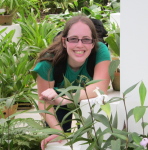
|
Affiliation: |
Salk Institute for Biological Studies -and- University of California, San Diego |
|
About: |
I'm a graduate student in John Reynolds's lab at the Salk Institute in La Jolla, CA. My dissertation focuses on trying to tease apart how attentional state modulates specific components of the primate V4 cortical circuit. As I delve into the complexity of my extracellular spiking data, I hope that the course will provide new perspectives on how to think about my data in the context of the larger cortical circuit, as well as provide a more solid foundation of the relative merits of different analysis techniques (including a better understanding of model assumptions). I also look forward to gaining a broader exposure to computational neuroscience. But perhaps more importantly--I look forward to meeting all of you! |
Gordon Arbuthnott

|
Affiliation: |
OIST |
| URL: | http://www.oist.jp/en/research/research-units/unit-brain-mech-behav.html |
|
About: |
I've been fascinated by dopamine and its action in brain since it was first described as a neurotransmitter during my Ph.D. time. The first cells we could image in brain were the catecholamine neurons and as we began to understand their anatomy it was clear that we were not dealing with the kind of system of neurons with which we were familiar from the motoneurons and sensory neurons that had been studied in depth by electrophysiologists. Now that there are computational hypotheses about what the dopamine cells signal to the organism we have a new chance to look at how they might do that and my recent work has been aimed at trying to put some flesh on the bones of that idea. I've developed some cell culture methods with which to try to understand how the connectivity in the striatum (the area that receives dopamine input) is changed by its release. The answers are not in yet but the methods are operational. |
Pragathi Priyadharsini Balasubramani
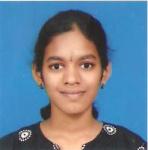
|
Affiliation: |
INDIAN INSTITUTE OF TECHNOLOGY- MADRAS, INDIA |
|
About: |
I wish to learn and appreciate the advanced Computational and Theoretical Neuroscience concepts, and enjoy the interactions with people, through this course. I would like to obtain knowledge on various aspects of modeling Serotonin's role in Striatum, and computationally analyse the effect of factors controlling the release of it. Besides helping me in my current research, I believe these activities would guide me set the building blocks of my future research. |
Sydney Brenner
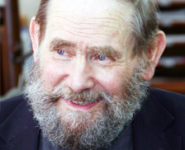
|
Affiliation: |
Okinawa Institute of Science and Technology |
| URL: | http://www.oist.jp/en/about-oist/message-president.html |
|
About: |
The aim of my research is to understand the development, function and evolution of nervous systems by studies of their genetic specification. |
Claudia Clopath
|
Affiliation: |
UMR 8119 CNRS Universite Paris Descartes 45 Rue des Saints Peres 75270 Paris Cedex 06 France |
| URL: | http://www.neurophys.biomedicale.univ-paris5.fr/~clopath/ |
|
About: |
I am generally interested in learning and memory. I designed model of Spike-Timing-Dependent Plasticity and studied the functional implication of learning in networks. I am also interested in networks dynamics, balance between excitation and inhibition, connectivity, coding etc. Recently, I am collaborating with experimentalists working on cerebellar learning which, by its architecture, seems to undergo supervised learning. As computer language, I am using Python and Matlab. |
Erik De Schutter
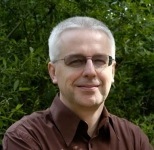
|
Affiliation: |
Computational Neuroscience Unit Okinawa Institute of Science and Technology |
| URL: | http://www.irp.oist.jp/cns/ |
|
About: |
I have been teaching for more than 10 years at European CNS summer schools and was part of the last five OCNCs. It is always exciting to meet the diverse groups of highly motivated young scientists attending our courses. Summer courses have an important function in teaching computational methods and approaches, and in establishing social networks among the participants. Ideally every neuroscientist, including experimentalists and clinicians, should attend a CNS course because computational methods have become essential tools to understand the complex systems we are studying. There is a broad range of modeling approaches available. I have specialized in data-driven, bottom-up methods that are more accessible to experimentalists because they are mainly parameter driven. This includes large compartmental models of neurons with active dendrites, networks with realistic connectivity using conductance based neuron models and reaction-diffusion models of molecular interactions. I will focus on the latter during my methods presentation, but please feel free to ask me or my collaborators about our other work! Most of the work in my lab concerns the cerebellum, including its main neuron the Purkinje cell. |
Patrick Dini

|
Affiliation: |
University of Freiburg |
| URL: | http://www.bcf.uni-freiburg.de/people/details/dini |
|
About: |
I decided to apply for this course to improve my knowledge of the simulator NEURON. Colleagues attended this course several years ago and they've kept an excellent opinion about it. I look forward to come to Okinawa. |
Kenji Doya
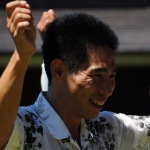
|
Affiliation: |
Neural Computation Unit, OIST |
| URL: | http://www.nc.irp.oist.jp |
|
About: |
I have been pursuing the dual goals of creating autonomously adaptive artificial systems and understanding the flexible learning mechanisms of the brain. I am particularly interested in the functions of the basal ganglia and neuromodulatory systems in reinforcement learning and the cerebral cortex in goal-directed representation learning. |
Bard Ermentrout

|
Affiliation: |
University of Pittsburgh |
| URL: | http://www.pitt.edu/~phase |
|
About: |
The application of dynamical systems to biological systems. I am interested in oscillations in the nervous system. I am also interested in spatio-temporal pattern formation, |
Megumi Fukuda

|
Affiliation: |
Nara Institute of Science and Technology / ATR |
| URL: | http://mtaso.com/ |
|
About: |
I am Megumi Fukuda, PhD student at Advanced Telecommunication Research Institute International (ATR). Fascinated in cognitive neuroscience, I joined ATR in 2009 as a master student and now am a PhD student. I have been working on a real-time fMRI neurofeedback project to test subjects in fMRI scanners to be able to modulate their neural activity by monitoring the fMRI signals. Having a psychology background, I have focused on empirical studies. Now I would like to develop knowledge of theoretical & computational neuroscience, which will compensate my primary point of view in the field. Also I am looking forward to seeing all of you in Okinawa and enjoying its beautiful nature and excellent local food! |
Wulfram Gerstner

|
Affiliation: |
Laboratory of Computational Neuroscience, EPFL |
| URL: | http://lcn.epfl.ch/~gerstner/ |
|
About: |
Computational Neuroscience, Synaptic Plasticity, Integrate-and-Fire Models, Spiking Neurons |
Masahiko Haruno

|
Affiliation: |
Center for Information and Neural Networks, National Institute of Information and Communications Technology |
| URL: | http://gcoe.tamagawa.ac.jp/eng/member/detail.html?id=45 |
|
About: |
My research interest is to understand computational mechanism existing behind individual differences in social decision making. |
David Higgins
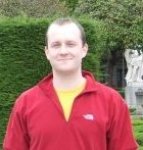
|
Affiliation: |
Ecole Normale Superieure, Paris |
| URL: | http://www.uiginn.com |
|
About: |
I am highly motivated to pursue a career in mathematical and computational modelling of neurological systems. It will benefit me enormously to be given a thorough grounding in the underpinnings of computational neuroscience by some of the top researchers in the world. I especially need to learn the specific techniques used in computational neuroscience and, as far as possible, to deepen my knowledge of biological neuroscience. I feel this course will benefit my future development enormously and to pursue it at the present stage in my career will obviate the need for much remedial work later. |
Yasuhiko Igarashi
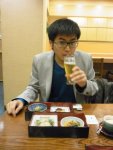
|
Affiliation: |
Department of Complexity Science and Engineering Graduate School of Frontier Sciences, The University of Tokyo |
| URL: | http://mns.k.u-tokyo.ac.jp/~igayasu1219/ |
|
About: |
I'd like to apply for the OCNC because of the attractive lectures. Some lectures, such as Dr. B. Ermentrout, Dr. W. Gerstner and Dr. G. Mongillo, study a world-leading synaptic computation. Although options strongly diverse on what constitutes a good model of a neuron, they constructed simple neuron models with few parameters that are amenable to mathematical analysis and solve theoretical issues surrounding neuroscience. If I'm given access to participants at the OCNC, I want to learn how they have a choice of various forms of synaptic plasticity in the cerebral cortex, and find the relationship with change in neural activities and behaviors. Thus I think this course is a good opportunity to grow up as a theoretical neuroscientist and apply to the OCNC. |
Bernd Kuhn
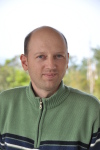
|
Affiliation: |
Okinawa Institute of Science and Technology |
| URL: | http://www.oist.jp/en/research/research-units/unit-opti-neuroimag.html |
|
About: |
My main research interest is imaging brain activity in awake, behaving animals with two-photon microscopy. I use voltage-sensitive and calcium-sensitive dyes to analyze cell activity on the cellular and network level. |
Zeb Kurth-Nelson
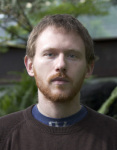
|
Affiliation: |
Department of Neuroscience, University of Minnesota |
|
About: |
I'm a postdoc in neuroscience. My background is in experimental neuroscience, and my current work is in reinforcement learning models of decision-making, with a focus on impulsivity. I'm especially interested in how the brain learns representations through experience. I hope to learn more about modeling techniques for causal inference and for network dynamics. I'm also very excited to visit Okinawa. |
Armin Lak

|
Affiliation: |
Wolfram Schultz's Lab, University of Cambridge, Cambridge, UK |
| URL: | http://www.neuroscience.cam.ac.uk/directory/profile.php?al572 |
|
About: |
I am interested in neuronal mechanisms and computational models relevant to learning, goal-directed behaviour and economic decision making. Currently, I am studying these topics by looking at the activity of mid-brain Dopamine neurons as well as running simple reinforcement learning models. By attending the course I hope to gain skills that may assist me in understanding and making more detailed computational models. Looking forward to meet all of you in Okinawa! |
Yann Le Franc
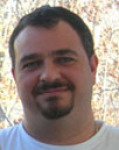
|
Affiliation: |
University of Antwerp |
| URL: | http://www.neuroinformatics.be |
|
About: |
Dear all, My primary research interest is to link the impact of conductance changes, triggered by neuromodulatory action, and information processing both at the level of single cell and small network. For this purpose I used both a modeling approach (using NEURON) and an experimental approach (patch-clamp, calcium imaging and dynamic clamp). More recently, the need of clear and reliable data representation and sharing to design more realistic model brought me to the Neuroinformatics field. As a member of the Task Force of the MultiScale Modeling program of the INCF I am now focused on developing an ontology of neural network models and developing a standardized language for sharing such models. I am looking forward to meeting you in OCNC and sharing with you this wonderful experience. |
Zhaoping Li
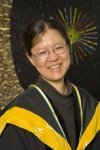
|
Affiliation: |
University College London |
| URL: | http://www.cs.ucl.ac.uk/staff/Z.Li/ |
|
About: |
Computational neuroscience, visual neuroscience |
Luca Lonini
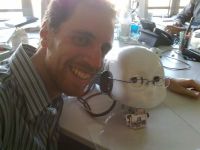
|
Affiliation: |
Frankfurt Institute for Advanced Studies - Goethe University |
| URL: | http://fias.uni-frankfurt.de/~lonini |
|
About: |
I am a PhD student in Computational Neuroscience at the Frankfurt Institute for Advanced Studies/Goethe University (Frankfurt, Germany). My focus is on models of motor and perceptual learning at the functional level, that simulate learning of multiple tasks. Understanding how tasks are segregated in the brain and how to maximize transfer of learning across tasks are key questions of my research. Given the complexity and the different levels of analysis that characterize neuroscience today, an interdisciplinary approach is fundamental to develop novel methods and ideas in this field. I believe that Okinawa Summer School provides a highly valuable environment to meet scientists with very different backgrounds and thus create a fruitful exchange of knowledge. Moreover this is a unique opportunity to discover the Japanese culture immersed in the wonderful scenario of Okinawa. |
Jesús Manrique Gómez

|
Affiliation: |
Departamento Física Teórica. Universidad Autónoma de Madrid |
|
About: |
I work in theoretical models of spontaneous activity. I study dynamics of brain activity. My work is mostly based on computer simulations. I hope this course could provide me more solid knowledge about experimental techniques, data anlysis, etc. and other fields in neuroscience different from mine. Besides, I am very happy to come to Japan |
Fernanda Matias

|
Affiliation: |
Physics Department, Federal University of Pernambuco, Recife, Brazil |
|
About: |
I am doing my PhD in Physics at Recife, Brazil. I am interested on computational modeling of neuronal systems and their applications. I've been working on theoretical models of small but realistic neuronal networks, different synchronization regimes that emerge and their possible relevance for spike-timing-dependent plasticity (STDP). I would like to learn more about phase resetting curves and learning mechanisms. I think this school is a great opportunity to meet people with similar interests and develop new ideas. I also enjoy travelling and I am very excited about going to Japan! |
Michal Matuszak
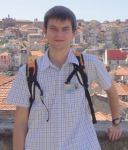
|
Affiliation: |
Faculty of Mathematics and Computer Science, Nicolaus Copernicus University |
| URL: | http://mat.umk.pl/~gruby |
|
About: |
As participants of OCNC have different backgrounds, one of my reasons to attend is the opportunity to meet young and experienced neuroscientists. I hope to discuss details of efficient implementation methods and possible ways of parallelizing the simulations with researchers specialized in computational neuroscience. Most of the time I have contact with people with Math/CS background, so I enthusiastically look forward to meeting researchers with experimental background who can acquaint me with their needs and exceptions from computer simulations. During lectures I would like enhance my knowledge in computational neuroscience. I mainly hope to learn about synaptic transmission, models of learning (reinforcement learning) and memory. Also, I look for some information about perception and the gap between biological mechanisms and cognitive function. |
David McCormick

|
Affiliation: |
Yale University |
| URL: | http://www.mccormicklab.org |
|
About: |
Neurophysiology of forebrain function and dysfunction |
Gianluigi Mongillo
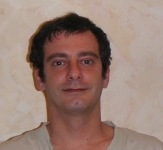
|
Affiliation: |
Laboratory of Neurophysics and Physiology, CNRS UMR8119, Paris Descartes University, Paris, France. |
| URL: | http://www.neurophys.biomedicale.univ-paris5.fr/ |
|
About: |
I have, at the present, two main research interests. One is to understand the mechanisms underlying the activity-dependent modulation of the transmission capabilities of chemical synapses, and their impact on the collective dynamics of local cortical circuits. The other one is to understand, within a bounded-rationality framework, stable sub-optimality in behaviour, which is apparent in experimentally well-controlled situations as well as in perfectly natural ones. I spend my leisure time looking for a reasonable synthesis between these two extremes. |
Jan Morén
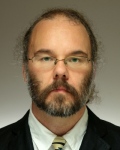
|
Affiliation: |
Kyoto University |
| URL: | https://sites.google.com/site/janmoren/ |
|
About: |
My research interest is in modelling the function of the subcortical areas of the brain. These areas perform many of the fundamental cognitive and perceptual functions we take for granted, and form a critical support for the high-level cognitive faculties generated in the cortex. My aim is to understand the underlying structure and functionality of these areas, but also to understand biological systems as a means toward creating powerful and flexible artificial systems for use in robotics and machine sensing. I have previously worked on modelling the amygdala as a classical conditioning system, and on a low-level attention system for use in humanoid robots. I am now working on a detailed spiking neuron level model of the brainstem saccade generation system, including the superior colliculus, using the NEST simulator and the RICC cluster at RIKEN. |
Mario Negrello
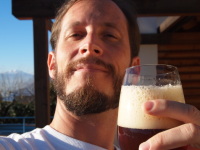
|
Affiliation: |
OIST |
| URL: | http://www.irp.oist.jp/m.negrello |
|
About: |
How do the physical properties of matter acquire dynamics, structure and finally function? I am interested in the particular arrangements that matter that have the capability of solving problems and storing solutions, brains that is. Dynamical systems is an adept language to describe the problem in very many levels, and one that we ourselves can fathom. I work on the relationships between structure and dynamics of neural networks, from the dynamical system's standpoint, attempting to connect with the functional/ecological problems that organisms encounter, and have evolved to negotiate. |
David Peterson

|
Affiliation: |
Computational Neurobiology Laboratory Salk Institute for Biological Studies |
| URL: | http://inc.ucsd.edu/~poizner/dpeterson.html |
|
About: |
I am a joint postdoc fellow in Terry Sejnowski's lab at the Salk Institute and Howard Poizner's lab at UCSD. Although my original studies were in electrical engineering and computer science, most of my research has been in cognitive neuroscience and my reading primarily in the neurobiology of the basal ganglia. My primary passion is the pathogenesis of dystonia, the third most common movement disorder after Parkinson's disease and essential tremor. There is a large body of experimental and clinical evidence in dystonia that can be unified by the hypothesis that the pathogenesis involves abnormal use-dependent plasticity in the basal ganglia. However, the dynamic circuit mechanisms that lead to the disease state remain elusive. A variety of abnormalities in the basal ganglia dopamine system have been implicated, and several forms of dystonia exhibit striking task-specificity. My overarching goal is to use computational models of plasticity in the basal ganglia to link cellular/molecular level to behavioral level data, and ultimately to provide a principled basis for developing new treatment strategies. In this project, I am particularly interested in dopamine-dependent STDP at corticostriatal synapses. While this has received recent attention experimentally (Shen et al. 2008 Science), it has received relatively little attention computationally compared to, for example, STDP at synapses outside of the basal ganglia. I hope to learn from the breadth of expertise at the OCNC how best to model dopamine-dependent STDP and how best to scale it up for use in large circuit models. I very much look forward to the course and the interaction with a great group of like-minded scientists. |
Astrid Prinz
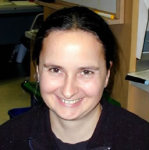
|
Affiliation: |
Department of Biology Emory Univerisy |
| URL: | http://www.biology.emory.edu/research/Prinz/index.html |
|
About: |
synchronization and homeostasis in pattern-generating networks |
Sarah Rieubland

|
Affiliation: |
University College London, UK |
|
About: |
The goal of my reasearch is to understand better the link between neural connectivity and microcircuits function. In particular I aim to improve our knowledge of the connectivity rules in the cerebellum and to understand how they relate to the processing and computing capacities of the circuit. For this, I believe that combining experimental and modelling studies is the most promising strategy. I am therefore very enthusiastic to take part in the OCNC, and lean more about computational neuroscience. I am very much looking forward to meeting everyone in Okinawa. |
Bas Schotten

|
Affiliation: |
CNCR, Vrije Universiteit Amsterdam |
| URL: | http://www.cncr.nl/research_teams/team_synaptic_computation/ |
|
About: |
During both my MSc training in theoretical physics and an intermezzo into logic and philosophy of language, I became increasingly fascinated with the workings of the brain -- in particular, its information processing capabilities. Also, I find the interplay of various scientific fields very appealing: the complex dynamics of this system make it interesting from a physics point of view; its computational properties can be inspirational for new developments in computer science; while a better understanding of these aspects, combined with biochemical insights, will hopefully lead to successful treatment of complex (brain) diseases. I am currently doing a PhD in the synaptic computation group at VU Amsterdam; my main research focus being the construction of computational models of the dynamics of protein networks involved in short-term plasticity. Theory and experiment are integrated, as the models should eventually be able to explain real genetic perturbation data from hippocampal autapses. Participating in OCNC will hopefully, through discussions with my fellow students and faculty members, provide me with some new computational tools and tricks of the trade, and teach me how to put these to good use in my projects. Apart from the scientific gains, OCNC will be a first time exposure to Japanese culture to me - something which I am really looking forward to :-) |
Sebastian Seung

|
Affiliation: |
MIT Brain and Cognitive Sciences |
| URL: | http://hebb.mit.edu/people/seung/ |
Jascha Sohl-Dickstein

|
Affiliation: |
Redwood Center for Theoretical Neuroscience University of California, Berkeley |
| URL: | http://redwood.berkeley.edu/wiki/Jascha_Sohl-Dickstein |
|
About: |
I am a graduate student in Bruno Olshausen's lab at UC Berkeley. Much of my research involves developing training techniques for extremely flexible probabilistic models, and then training these models on natural stimuli. Learning the structure inherent in natural stimuli can aid our attempts to understand the brain, both by informing the search for the transformations of sensory input performed by neural circuits and by allowing precise control and characterization of naturalistic test stimuli. I am hoping to come out of this course with an understanding of computational models for real neurons and real neural networks. Also, I think it will be a lot of fun! |
Charles Stevens
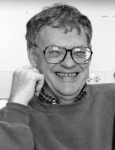
|
Affiliation: |
Salk Institute |
|
About: |
My research goal is to discover the design principles that underlie this scalability of neural circuits that carry out the brain's computations. I try to find these principles, learn what they are good for, and understand how they are implemented in development. |
Klaus Stiefel

|
Affiliation: |
Theoretical and Experimental Neurobiology Unit Okinawa Institute of Science and Technology |
| URL: | http://www.oist.jp/tenu/ |
|
About: |
I got my undergraduate degree in microbiology from the University of Vienna and my PhD in zoology from the Max-Planck Institute for Brain Research in Frankfurt (with Wolf Singer). Then I did a post-doc with Terry Sejnowski at the Salk Institute in La Jolla. In 2006 I joined OIST and established the Theoretical and Experimental Neurobiology Unit. |
Etsuo Susaki

|
Affiliation: |
Laboratory for Systems Biology, RIKEN Center for Developmental Biology |
| URL: | |
|
About: |
My recent interest in neuroscience is how information is processed within a neural network controlling an organism's behavior such as the circadian clock-associated sleep-wake cycle. To experimentally approach the problem, my current projects aim to generate a cell population of the suprachiasmatic nucleus (SCN), the center of mammalian circadian clock, using in vitro system for culturing and developing the cells. This system will enable me to approach problems of the tissue's unique properties, including the oscillating electric activity and the coupling of the transcriptional and the electric oscillations in each SCN cells. I think that these problems are also a good target for some theoretical approaches and may be suitable as a exercise during OCNC. During the course, I expect to have in-depth discussions on how to integrate experimental and theoretical approaches with other participants, where my current work can contribute to stimulate new ideas. While I made my career as an experimental scientist, I also have had a strong interest in theoretical approaches and their combination with experiments. To get involved in such marginal projects, I moved to Dr. Hiroki Ueda's Lab (Laboratory for Systems Biology, RIKEN Center for Developmental BIology) in 2010 and started to develop experimental platforms to solve the remaining questions in the circadian clock and the related behaviors. I believe that usage of these platforms in combination with theories and mathematics is the most effective. However, problem is my poor background in theoretical studies. I believe that taking a training course as OCNC can promote the theoretical parts of my projects. I also expect that important biological questions in neuroscience and valuable applications of my current work to the research area will be clarified through discussions with participants. |
Yasuhiro Tanaka

|
Affiliation: |
Division of Brain Circuits, Neurobiology, National Institute for Basic Biology |
|
About: |
I am working on the experimental neuroscience. I have worked for neuroanatomy and neurophysiology using brain slices in my Ph.D. course, to get basic knowledge of the central nervous system and the cerebral cortex. Through OCNC, I would like to learn ways of thinking and methods in theoretical/computational neuroscience. Specifically, I am interested in NEST based simulation and also in methods for analyses of large data set obtained from multiple neuron recordings, such as in vivo two-photon imaging. |
Alexandra Tikidji-Hamburyan

|
Affiliation: |
Center for Integrative Neuroscience, University of Tuebingen |
| URL: | http://www.cin.uni-tuebingen.de/research/research-groups/retinal-circuits-and-optogenetics-muench.php |
|
About: |
I am a second year PhD student and study the retina. Although experiments remain the main tool for my work, I am interested in possible application of theoretical approach to further advance the understanding of my results. Moreover, some experimental tasks seem to be impossible to perform due to technical reasons, whereas modeling can shed light on it. That is why I have applied for the OCNC, and I hope to gain necessary knowledge, skills, and maybe also some ideas from the experts in the field. |
Minh-Son To
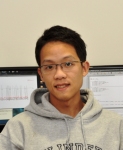
|
Affiliation: |
Neuronal Integration Laboratory The John Curtin School of Medical Research, Australian National University |
|
About: |
Hi all, I recently commenced a PhD in neuroscience under the supervision of Prof Greg Stuart at the Australian National University. Currently, I study the dendritic mechanisms of neural integration using patch-clamp recordings and I am interested in the influence of cortical activity on dendritic information processing. Looking forward to meeting everybody at OCNC 2011! |
Richard Tomsett

|
Affiliation: |
Newcastle University |
| URL: | http://www.biological-networks.org |
|
About: |
I am a first year PhD student in Marcus Kaiser's lab at Newcastle University. My background is in physics, but I moved into computational neuroscience because I find brains far more interesting than bosons. I am especially interested in the differences between healthy and unhealthy brains, and the mechanisms that cause pathologies, particularly epilepsy. Our group is developing models of network growth and activity in order to gain a better understanding of these mechanisms. I am really looking forward to OCNC, as it is a great opportunity to gain specific advice on my work and broaden my knowledge under the guidance of a fantastic assembly of experts, as well as to meet other young researchers in the field. That beach doesn't look too shabby, either. |
Benjamin Torben-Nielsen

|
Affiliation: |
ELSC, Hebrew University Jerusalem |
| URL: | http://http://lobster.ls.huji.ac.il/~ben.torben/ |
|
About: |
I'm interested in many things. Scientifically, I'm interested in (biophysical) mechanisms of computation, and, actually also in trying to find out what is computed and what needs to be computed. Up to know I've been looking mostly at a single cell level but broadening more and more to functions that can arise from networks of interacting neurons. |
David Tsai
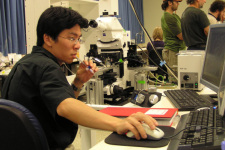
|
Affiliation: |
Graduate School of Biomedical Engineering, University of New South Wales, Sydney, Australia |
| URL: | http://bionic.gsbme.unsw.edu.au/ |
|
About: |
I am interested in how the retina works. In particular, how the retinal neurons encode visual information and conveying these to the brain. A goal of our research group is to develop a retinal implant that could be used to restore functional sight to the profoundly blind. Therefore I also investigate how the retina responds to artificial electrical stimulation. To address these questions, I have been using patch clamp, sharp microelectrode, LFP and multi-unit recordings in both the isolated retina and the whole animal. Recently I started building models to investigate issues that are either difficult to execute experimentally or require a theoretical approach. OCNC provides a good opportunity for me to gain further knowledge and experience in computational modeling. |
Tomoki Tsuchida

|
Affiliation: |
University of California, San Diego |
|
About: |
I have been interested in computational mechanisms of attention, especially in the visual and auditory domains. I have been studying towards a Master's degree in computer science at University of California, San Diego (UCSD) with a concentration in computational cognitive neuroscience. Specifically, I have been working with Dr. Garrison Cottrell to build a model of auditory attention. The model explains exogenous attention mechanism from the environmental statistics: to a first approximation, rare signals in the environment draws more attention. However, the details of the model requires the understanding of cortical and thalamic coding mechanisms, which I would like to learn more about. I have also worked with Dr. Angela Yu on a project to extend Dr. Yu's 2007 paper |
Philip Tully
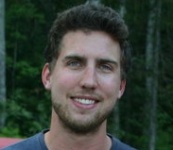
|
Affiliation: |
1) Kungliga Tekniska högskolan, Department of Computational Biology 2) University of Edinburgh, Institute for Adaptive and Neural Computation |
| URL: | http://www.csc.kth.se/forskning/cb/cbn/ |
|
About: |
I am currently a first-year PhD student studying Computational Neuroscience being co-supervised by Anders Lansner in Stockholm (KTH) and Matthias Hennig in Edinburgh (UoE). I am originally from the New York area, where I formerly studied Bioinformatics at Vassar College and Cold Spring Harbor Laboratory. I was concerned with developing parallel solutions to computationally intensive problems in biology, specifically with respect to de novo sequence assembly, approaches to phylogenetic inference (MP, ML, MCMC and Bayesian models) and summarizing large collections of evolutionary trees. As I continue to make my academic transition from computationally modeling phylogenetic trees to networks of neurons, I am eager to have the opportunity to form collaborative partnerships during OCNC by communicating across different disciplines, perspectives and cultures. I have become fascinated with the idea of neural circuits operating within a critical regime and the implications this holds in terms of homeostatic regulation and optimal processing capabilities (i.e. memory, information transmission and computational power) in the brain. Specifically, I am interested in exploring what properties of a network can generate homeostatic behavior and can tune its parameters towards a critical state. This June, I look forward to being able to learn about and discuss network modeling ideas regarding both the work of others and my own in the exotic setting offered by Okinawa. |
Eilon Vaadia
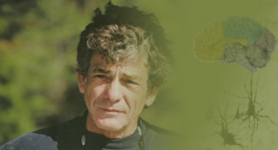
|
Affiliation: |
The Edmond and Lily Safra Center for Brain Sciences, Hebrew University of Jerusalem |
| URL: | http://motorcortex.huji.ac.il |
Julia Veit

|
Affiliation: |
Visual Cognition Lab University of Fribourg |
| URL: | http://www.unifr.ch/inph/vclab/home/People/julia-veit |
|
About: |
I'm a second year PhD student at the University of Fribourg in Switzerland. I am primarily interested in the visual system and how information about stimuli is encoded and processed through the visual hierarchy. I did my masters thesis in bioinformatics at the Max Planck Institute in Tübingen analyzing local field potentials from inferior temporal cortex of macaques. Now, for my PhD I combine extracellular recordings in tree shrew primary visual cortex with microstimulation and iontophoretic application of drugs. I am attending OCNC because I hope to be able to model an effect I found in my data where an excitatory response suddenly disappears, depending on the timing of the stimulus. I have no modeling experience so far, so I hope to learn a lot. Most of all I am looking forward to meeting and exchanging ideas with a lot of interesting people from the different disciplines. |
Ping Wang
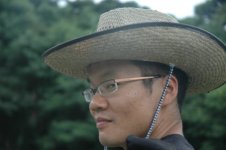
|
Affiliation: |
Salk Institute |
| URL: | http://www.cnl.salk.edu/~ping |
|
About: |
I have mainly concentrated on issues relating to neural coding, including the role of synchrony in affecting the reliability and precision of neural spiking. More generally, I am also interested in a wide variety of cross-disciplinary applications, such as neuromorphic computing, neuroengineering, neuroprosthetics, and more. |
Richard Watson

|
Affiliation: |
University of California, Davis; Applied Mathematics |
| URL: | http://www.math.ucdavis.edu/~watson/ |
|
About: |
My research interests lie at the nexus of several disciplines: dynamical systems (describing behavior of neurons and synapses), stochastic/statistical modeling (building representations of behavioral sequences) and network theory. I currently am pursuing the first two. I use simple mathematical models of neural dynamics (ODEs and DDEs, e.g. an LIF neuron, an Izhikevich neuron, an alpha synapse) wired to one another in biologically appropriate ways to generate behaviors'' (binary spike strings). Using techniques developed by my advisor Jim Crutchfield, I identify the minimal sufficient Hidden Markov Model matching an observed process (i.e. set of data) and infer a number of necessary properties about the system generating this data including its complexity, the amount of memory needed, its entropy rate and so on. My research seeks to characterize how sets of parameters in the dynamical system map to observed properties of the behaviors emergent from it. |
Daniela Woltmann

|
Affiliation: |
University of Warwick |
| URL: | http://www2.warwick.ac.uk/fac/sci/sbdtc/students/ |
|
About: |
I am currently in the second year of my Systems Biology PhD at the University of Warwick (England). I am looking forward to meet other neuroscientists, learn more about the field, exchange ideas and visit Japan for the first time. |
Angela Yu

|
Affiliation: |
University of California San Diego |
| URL: | http://cogsci.ucsd.edu/~ajyu |
|
About: |
My research program aims to elucidate the neural basis of cognitive processing using a combination of theoretical and experimental methods. I study the inter-related cognitive functions of sensory procession, attentional selection, perceptual decision-making, sensorimotor integration, learning, and adaptation. The theoretical tools I utilize include Bayesian probability theory, decision theory, stochastic control theory, information theory, and dynamical systems analysis. The experimental methods I employ include psychophysics, eyetracking, and functional brain imaging. |




